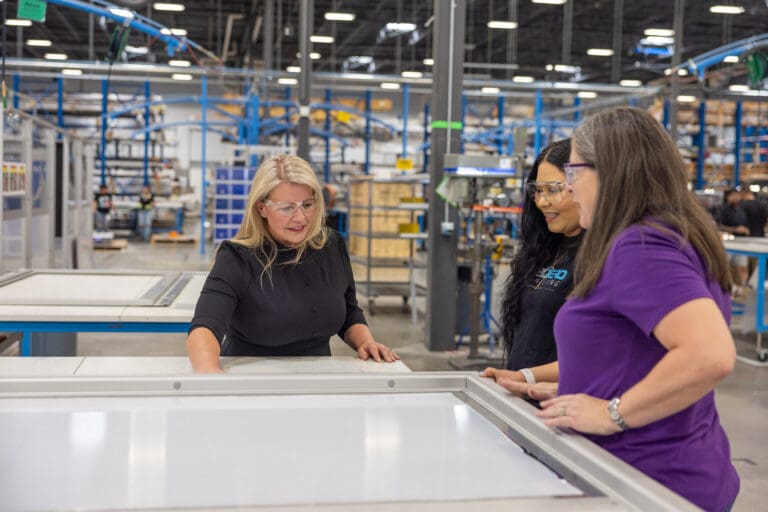Purple Frog Systems is a multi-award-winning global data analytics SME consultancy based in Telford, Shropshire, working with enterprise-level organisations across the world to help them manage and report on their data.
I’ve been working in tech for over 25 years and, within that time, have seen an increasing appeal among women to start careers in the sector.

Many of the misconceptions and biases within education that would put women off considering a career in STEM are actively being tackled. Last year it was reported that girls made up 44% of all STEM A-level entries and 51% of all science A Level entries – which suggests the STEM push is slowly taking effect. However, it appears something may be stopping some of these girls from pursuing their academic interests in STEM all the way to the workplace. Women still only account for 29% of the STEM workforce (over one million women), according to IET data.
So how do we keep momentum going in attracting female talent to the tech industry? Technical education is key to helping create a more gender-diverse industry. When it comes to both filling existing gaps within sectors and creating a diverse pipeline of talent for the future. In the first quarter of 2022/2023, there was a 13% increase in the number of women starting STEM apprenticeships compared to the previous year. Apprenticeships and other technical education routes, such as T Levels and HTQs, provide alternative routes into the industry, thus making it more accessible. I am a big advocate for them, and at Purple Frog Systems, too, we’ve hired 3 apprentices and are working with Telford College to host T Level and HTQ students.
Business benefits of technical educational
We are a small business of 18 employees and 4 consultants, which means that the learners we hire – whether that be apprentices or HTQ students – add a lot of value to the business. Their efforts make a big difference to our output and general productivity; something that only gets better as they learn the ropes and become more confident with their responsibilities. After their course is complete, they have opportunities to progress within the business. We’ve already seen this happen with one of our former apprentices that studied Level 3 in Business Administration. They’re now taking on a full-time role at Purple Frog Systems as Marketing and Customer Service Manager. She’s since started a Level 7 Degree apprenticeship to continue her studies and upskilling journey – something we’re completely supporting her with.
I actually completed my own apprenticeship in 2020. It was a Level 5 CIPD Diploma in Human Resource Management; something I chose to do to ensure that my skills were up to date with the latest legislation and procedures. Being an employer but also having been on the student-side myself means that I have a unique understanding of what the learners we hire may be going through, as well as appreciating how upskilling at work can improve your confidence and career prospects.
I’ve seen first-hand how apprenticeships – my own included – have benefitted the business. For example, our latest apprentice is studying a L3 apprenticeship in Multi-Channel Marketing and as a direct result of the relevant course content that she is studying, we felt able to send her to an industry event that we were sponsoring where she helped to run our tradeshow stand and gather sales leads whilst actively marketing the event on social media. This is why I’m motivated to ensure others get the best out of their technical education experience. Part of making that happen depends on employers actively shaping the work environment into a supportive one. We try to ensure daily that each learner is empowered to make decisions within their role and ask questions – no matter how big or small!
Shaping the industry’s future
The tech industry is a long way from achieving a gender balance, which means each business, including my own, has a lot of work to do. Individually, we won’t have all the answers but tapping into networks like the T Level Ambassador Network, or resources, such as the DfE Skills for Life campaign website, can help us become part of the solution.
We are currently exploring the opportunities T Levels present for employers, and I am working with my local college on their T Level programme. This is because we strongly believe in the value technical education brings to the business and want to ensure we’re accommodating multiple routes of entry into the business and industry.
The vision is ultimately to have a thriving, diverse workforce – not just within Purple Frog Systems but industry-wide. An important way to make that happen is to accommodate technical routes into the industry to ensure that female talent on less conventional career paths within tech can be discovered.
Interested in learning more about technical education options for yourself or your business? Click here to find out more.







